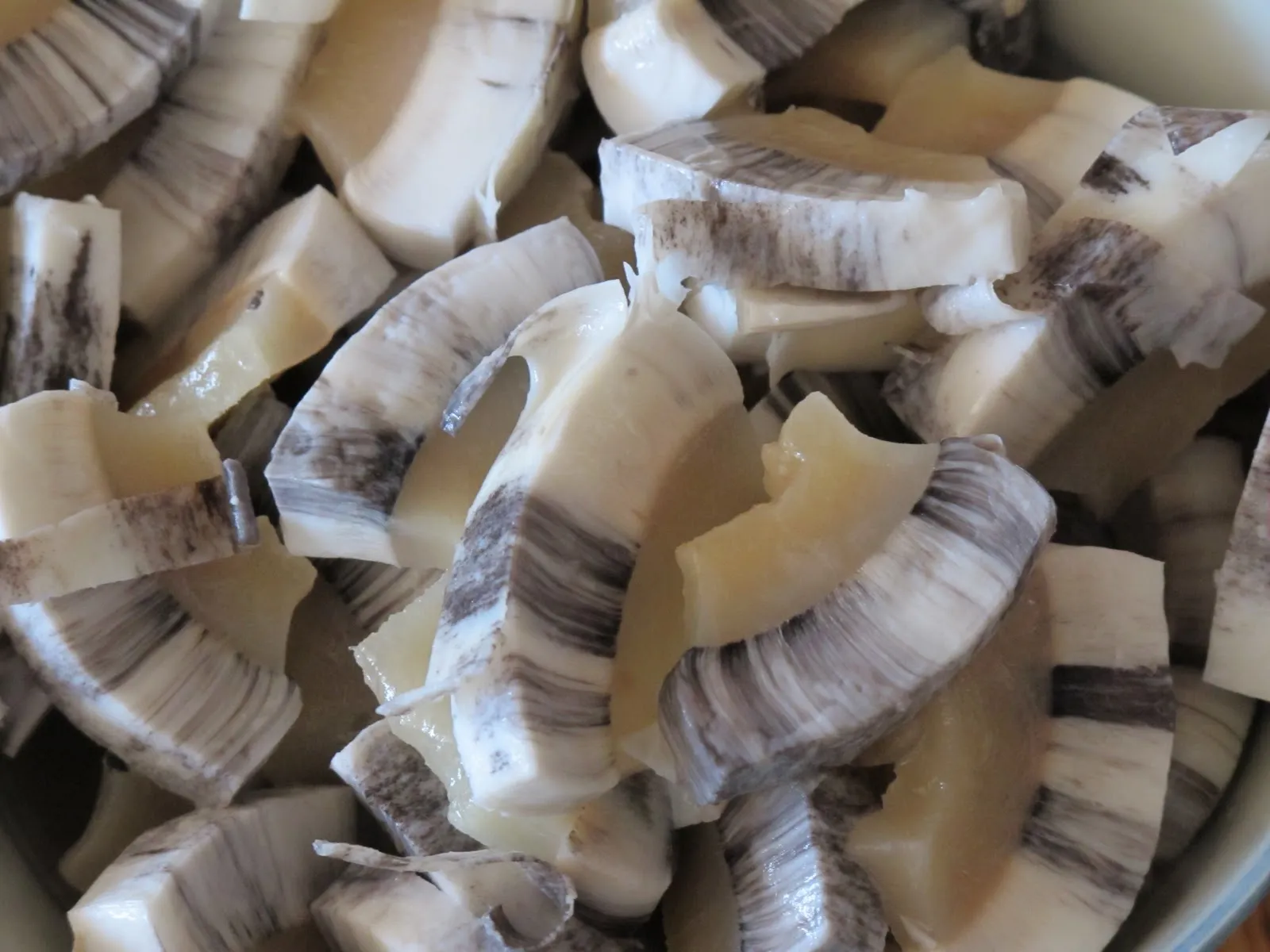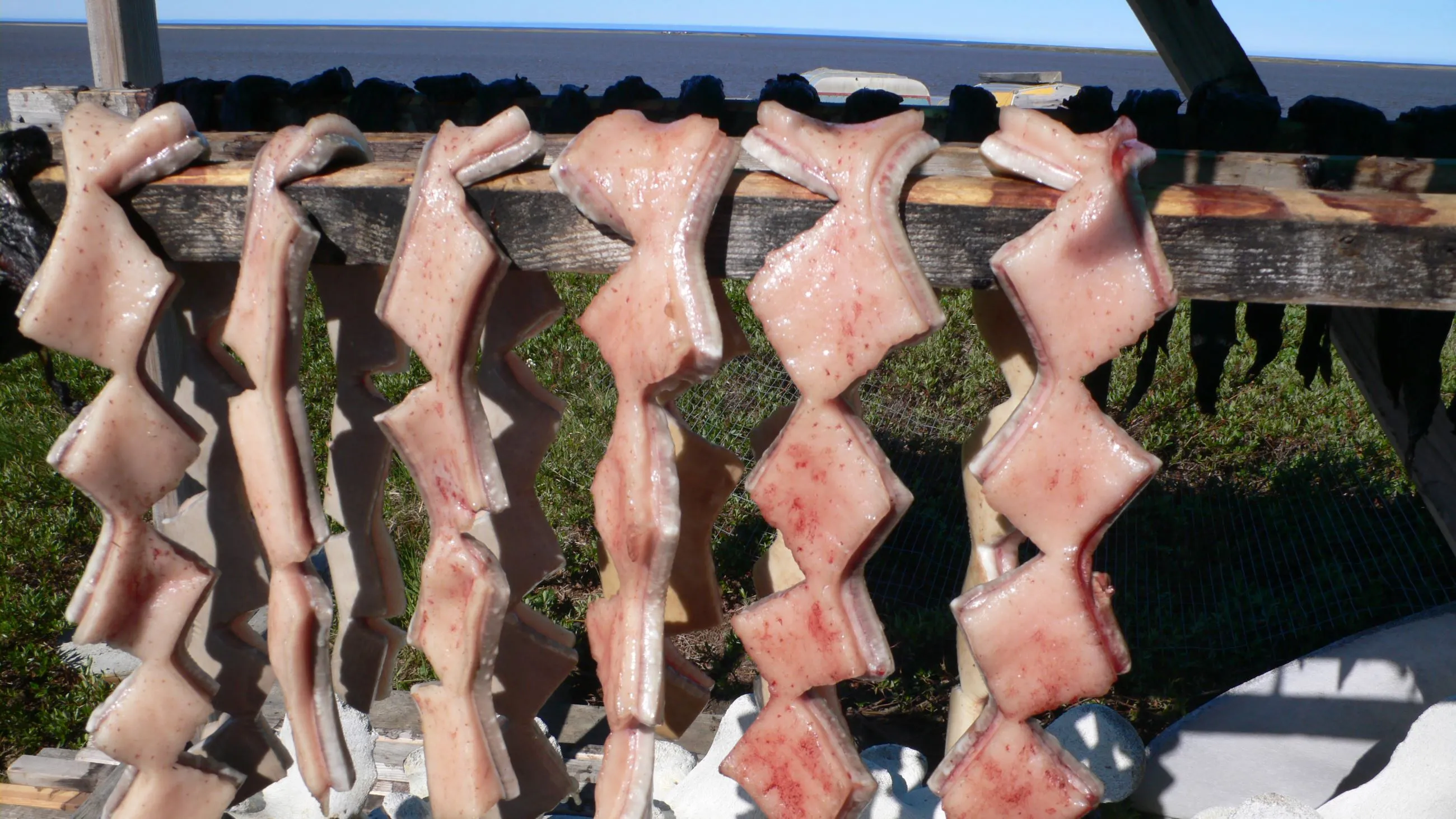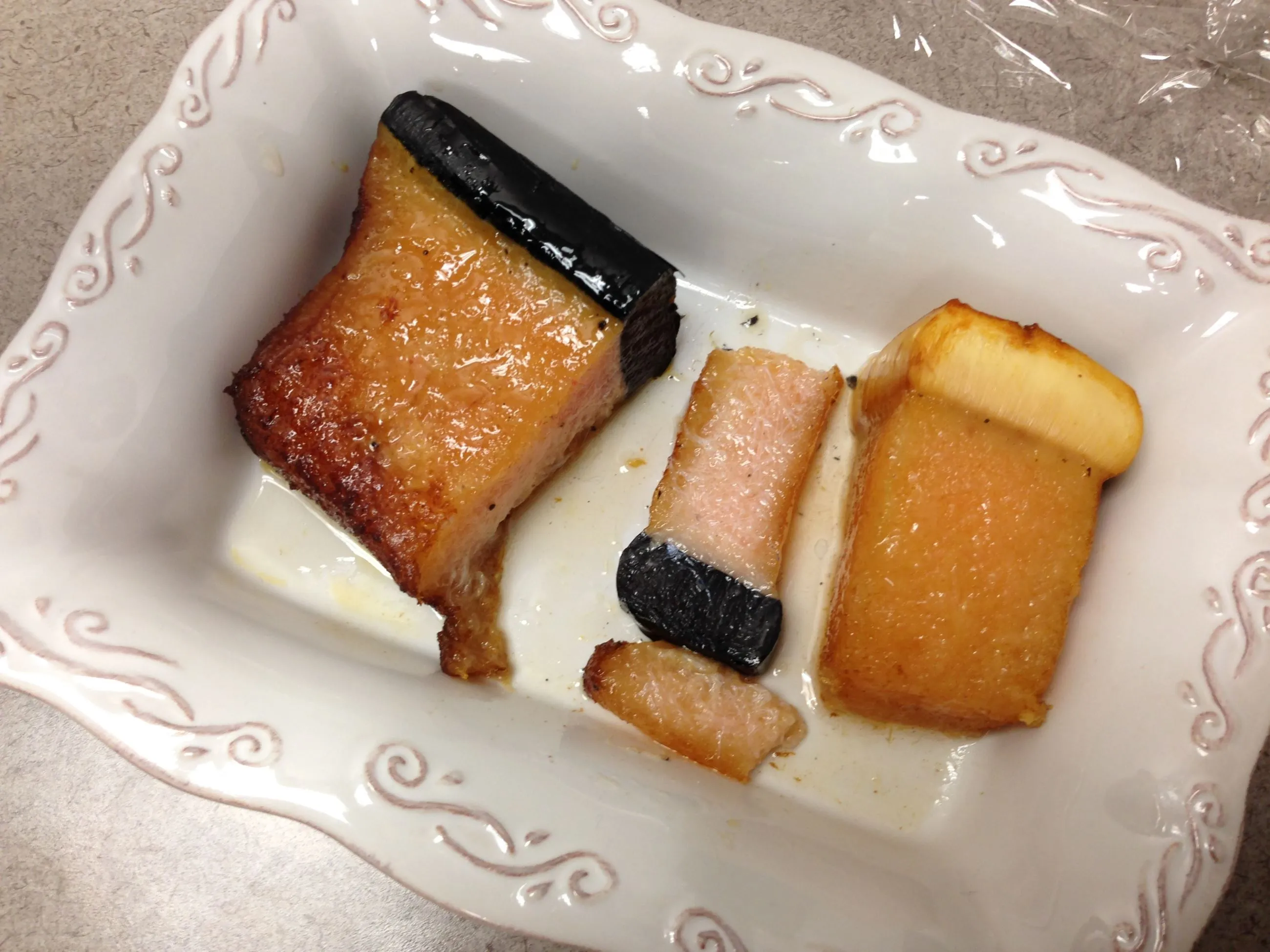Alaska, a vast and pristine land in the far north, is renowned not only for its majestic natural landscapes but also as the home of the Inuit people, an indigenous community with rich cultural traditions. Alaskan Inuit cuisine is an integral part of this unique cultural identity, reflecting a deep connection to the harsh environment and abundant natural resources. Traditional Inuit dishes are not merely essential sources of nutrition but also embody stories of their history, customs, and philosophy of life. Join “Du lịch khắp thế gian” (Travel the World) to explore this extraordinary culinary world, where each dish is a journey into the culture and history of the Inuit people in Alaska.
Muktuk: A Unique Flavor from the Frozen Sea
When it comes to traditional Alaskan Inuit cuisine, Muktuk is indispensable, a dish considered a symbol with a long history. Muktuk is more than just food; it is a part of life, culture, and the identity of the Inuit people.
Muktuk is made from the skin and blubber of Arctic whales, primarily Bowhead whales, Beluga whales, and Narwhals. After hunting, the Inuit cut the whale skin and blubber into bite-sized squares. The uniqueness of Muktuk lies in the distinctive combination of the chewy, elastic skin and the rich, fatty blubber that melts in your mouth.
Close-up of Muktuk, showing the layers of skin and blubber, ready to be eaten
Muktuk can be enjoyed in various ways. The Inuit often eat Muktuk raw or frozen, preserving the natural flavor and freshness of the ingredients. Additionally, Muktuk can be pickled, deep-fried, or smoked to create diverse flavor variations. When you taste Muktuk, you will experience the characteristic fattiness of whale blubber combined with the saltiness of the sea, creating an unforgettable culinary experience.
Some describe Muktuk’s flavor as similar to fried eggs or fresh coconut, while others perceive it as completely different, a unique taste that cannot be compared to any other food. Despite differing opinions, Muktuk remains a beloved and cherished dish by the Inuit, not only for its unique flavor but also for its nutritional value and profound cultural significance.
Nutritional Value and Health Benefits of Muktuk
In the harsh weather conditions of the Arctic, maintaining health and energy is crucial for the Inuit. Muktuk is not only a delicious food but also a valuable source of nutrition, helping the Inuit withstand the extreme cold and maintain a healthy life.
Muktuk is renowned for being a rich source of vitamin C. The epidermis of whale skin contains a very high content of vitamin C, up to 39mg per 100g, an impressive figure compared to many other foods. Vitamin C plays a vital role in boosting the immune system, protecting the body from infections, and helping to maintain healthy skin. Especially in an environment lacking green vegetables and fresh fruits like the Arctic, Muktuk becomes an invaluable natural source of vitamin C.

Besides vitamin C, Muktuk also contains plenty of vitamin D, another essential nutrient, especially important for those living in high-latitude regions where sunlight is very limited during winter. Vitamin D plays a crucial role in calcium absorption, helping to maintain strong bones and prevent osteoporosis.
In addition to vitamins, Muktuk is also a rich source of omega-3 fatty acids, a type of fat beneficial for heart, brain, and eye health. Omega-3s help reduce bad cholesterol, prevent cardiovascular diseases, improve brain function, and enhance vision.
With its high and diverse nutritional content, Muktuk is not only a traditional dish but also a natural “superfood,” offering numerous health benefits to the Inuit and anyone who has the opportunity to enjoy this unique food.
Akutaq: Sweet “Eskimo Ice Cream” from Nature
Besides Muktuk, Akutaq is another traditional dish not to be missed in Alaskan Inuit cuisine. Akutaq, also known as “Eskimo ice cream,” is a unique dessert made from natural ingredients readily available in the Arctic.
The main ingredients for making Akutaq include animal fat (usually reindeer or seal fat), berries (such as blueberries, raspberries), sugar (or honey), and sometimes snow or ice. All these ingredients are mixed and whipped until they form a fluffy, smooth, and naturally sweet creamy mixture.

Akutaq is not only a delicious dessert but also a high-energy food, very suitable for the cold weather conditions and outdoor activities of the Inuit. Animal fat provides energy, berries provide vitamins and antioxidants, creating a nutritious and balanced dish.
Depending on the region and family, the recipe and ingredients for Akutaq may vary. Some variations of Akutaq may include dried fish, beetroot, or nuts. However, the commonality of all Akutaq versions is the harmonious combination of the richness of animal fat, the sweetness of berries, and the freshness of snow or ice.
Akutaq is not just food but also part of the culture and traditions of the Inuit people. This dish is often prepared and enjoyed during festivals, birthdays, or other special events, expressing community solidarity and bonding.
Other Traditional Dishes and the Diversity of Inuit Cuisine
Besides Muktuk and Akutaq, traditional Alaskan Inuit cuisine is very rich and diverse, with many other unique dishes made from readily available natural ingredients.
Meat and fish are important food sources in the Inuit diet. Popular meats include reindeer, seal, whale, and bird meat. Meat can be prepared in various ways, such as boiling, roasting, smoking, or drying. Fish is also a crucial food source, with many different types of fish caught in the Alaskan seas and rivers, such as salmon, cod, herring, and halibut.

Another traditional Inuit dish is “Suqaq,” dried meat or fish. Suqaq is made by cutting meat or fish into thin strips and then drying them in the sun or smoking them. The drying process helps preserve the food for a long time and creates a distinctive flavor for the dish. Suqaq is an important source of protein and is often carried on hunting trips or long journeys.
In addition, the Inuit also use wild plants to supplement their diet, such as berries, roots, and seaweed. However, due to the harsh climate, the source of plants in the Arctic is not as diverse as in other regions, and meat and fish remain the main components of traditional Inuit cuisine.
Traditional Alaskan Inuit cuisine is not just about eating; it’s about connecting with nature, respecting animals, and being creative in using available resources. Each dish carries a story about the history, culture, and life of the Inuit people, contributing to the unique and rich cultural identity of Alaska.
Conclusion
Traditional Inuit cuisine in Alaska is a unique and fascinating cultural treasure, reflecting the deep connection between people and nature. From unique Muktuk and sweet Akutaq to diverse meat and fish dishes, each dish embodies special nutritional values and cultural significance. Exploring Inuit cuisine is not only a journey to experience new flavors but also an opportunity to better understand the history, customs, and life of this rich traditional indigenous community. Let “Du lịch khắp thế gian” (Travel the World) continue to accompany you on your journey to discover unique culinary cultures around the world.